Don't wanna be here? Send us removal request.
Text
Alex Hormozi - C.L.O.S.E.R framework

The C.L.O.S.E.R. method is built on the fundamental idea that people are motivated by pain or the desire to avoid pain. The core driver of this method is the concept of perceived deprivation. People are more motivated when they are aware of what they don't have and the negative consequences of not having it. This framework helps you identify their pain, amplify it, and position your product or service as the solution.
Let's dive into the acronym:
C - Clarify Why They're Here:
Purpose: The initial step is to understand the customer's starting point and intent. Why did they engage with you in the first place? What brought them to your community or platform?
Action: Ask direct questions. For example, "Why did you sign up for my free community?"
Goal: This sets the stage for the rest of the conversation and establishes their baseline needs or desires.
L - Label Them With a Problem:
Purpose: Once you know their "why," you need to identify a specific problem they're experiencing. This involves active listening and digging deeper than surface-level answers.
Action: After they share, keep probing with follow-up questions to identify the underlying issue. For example, "It sounds like you want this but you don't have that, right? You need help because of this?"
Goal: To surface their core pain point, the real reason they are seeking help or a change. It helps to frame the problem using their own words.
O - Overview Their Past Experiences:
Purpose: This step is about amplifying the pain. You want to tap into the cycle of past frustration and unmet needs. This isn't just about recalling what happened but understanding the emotions associated with it.
Action: Explore their past attempts to solve the problem and why they haven't succeeded.
Goal: To increase their perception of deprivation and therefore their motivation to change. You want to move them from a passive state to a proactive state of looking for change. This is where you make the pain tangible, real, and urgent for them.
Pain Agitation: Use both positive and negative visualization.
Positive: What are they missing out on by not having a solution? (Example: "Imagine all the free time you could have once you..." )
Negative (Present): What are they currently experiencing negatively because they don't have a solution? (Example: "How is the lack of a system causing you to feel?" )
Negative (Future): What are the long-term costs if they don't change now? (Example: "If you keep going down this path, what will your health, business, etc., look like in 5 years?")
S - Sell the Outcome, Not the Vehicle:
Purpose: Now that you've amplified the pain, it's time to present your solution, but in a very specific way. Focus on transformation and results rather than on features.
Action: Paint a vivid picture of the desired outcome. Sell the destination, not the transportation. Use analogies and stories.
Example: Instead of talking about the specific features of a weight loss program (meal plans, workouts), focus on what the customer will experience: "Imagine feeling confident, having more energy, and wearing the clothes you love!"
Goal: To create an emotional connection with the desired outcome and demonstrate how your product or service will deliver that.
E - Explain Three Components for Success (or Fewer):
Purpose: While you avoid dwelling on features, you still need to explain the mechanism that drives the outcome in a way that the prospect can understand.
Action: Identify 2-3 key components of your offering that are essential for success. Frame these components in a way that is easy to understand and remember.
Example: A fitness program might highlight "fitness," "nutrition," and "accountability" as the three crucial pillars.
Use Analogies and Metaphors: Create engaging stories that illustrate the benefits.
Goal: Build conviction and help them visualize the journey.
R - Reinforce the Decision & Onboarding:
Purpose: This is the follow-up after the sale, a crucial step to ensure customer satisfaction and retention.
Action:
Onboarding Call: Reiterate their goals and problems, then explain the next steps in detail. You're no longer selling the vacation; you're explaining the trip. (Example: "Here's what to expect when you arrive at the destination..." )
BAMFAM (Book A Meeting From A Meeting): Establish a clear schedule for future interactions. Ensure the customer always knows when the next communication point is. (Example: Schedule the next onboarding step and any follow-up calls during this call.)
Goal: To reinforce that they made the right decision and create a seamless experience going forward. This is the beginning of a good customer journey.
Key Takeaways:
Focus on the Customer's Pain: Understand the underlying frustrations and amplify the urgency to find a solution.
Sell Transformation, Not Features: Emphasize the desired outcome and how your product or service helps them get there.
Use Storytelling and Analogies: Help the customer visualize the benefits and why your solution is the right choice.
Be Intentional and Proactive: Never leave the customer in doubt about what comes next. The customer must always have a next step.
The Onboarding Process is Just As Important as the Sale: Use the same questioning techniques and active listening to guide the customer through the next steps of their journey.
Why This Method Works:
The C.L.O.S.E.R. method isn't just about manipulating people into buying. It's about deeply understanding their needs, presenting a compelling solution, and guiding them through a seamless experience. By focusing on pain points, desired outcomes, and the customer's journey, this framework helps you build trust, foster loyalty, and drive lasting results.
P.S.: If you haven't yet Make sure to Join The Skool Games today for Free and start your journey to building a successful online business!
Thank you.
0 notes
Text
The "Big Head, Long Tail" Model

The "Big Head, Long Tail" Model: How to Supercharge Your Online Community (and Make More Money Doing It)
Are you running an online community, a course, or any kind of recurring subscription business? If so, you're probably always looking for ways to attract new members, keep them engaged, and, let's be honest, make more money. But what if I told you there was a model that could dramatically shift your results, allowing you to spend more on acquisition, increase your per-customer value, and keep your members around longer?
Enter the "Big Head, Long Tail" model. It might sound a bit quirky, but trust me, it's a game-changer. It’s about strategically combining a high-value front-end offer with a reliable recurring subscription to create a powerful, sustainable business.
The Old Way vs. The "Big Head, Long Tail" Revolution
Traditionally, many online communities or subscription services rely on a simple model: attract members with a low-cost or free offer, and then try to convert them to a monthly subscription. It's a linear process that often feels like a slow grind. The problem? Many people churn quickly, and the pressure is always on to find new members just to keep the machine running.
The "Big Head, Long Tail" model flips the script. Instead of trying to immediately upsell a low-cost subscription, you introduce a high-value, one-time purchase before you even mention the monthly membership. Think of it like this:
The "Long Tail": This is your ongoing monthly subscription membership. Think of this as your reliable, long term revenue stream.
The "Big Head": This is the higher-priced, one-time purchase that acts as the first gate, a more immediate return.
What Exactly is the "Big Head"?
The beauty of the "Big Head" is its flexibility. It doesn't have to be another online course. It could be:
A Premium Course: A more in-depth, highly focused learning experience.
A Call Bundle: A package of 3-6 one-on-one coaching calls with you (This was highlighted by Hormozi as something he thinks everyone should do).
Exclusive Event Access: Entry to a live event, workshop, or retreat.
Small Project Work: A short-term service that provides immediate value.
Bundles: Package items/services together in a bundle
The key thing is that the "Big Head" must be high-value and command a premium price. Think 10x the monthly subscription you will be offering to your audience.
The Long Tail: Sustaining Value Over Time
The "Long Tail" is your ongoing offering, typically a lower-priced subscription that builds on the initial value delivered by the Big Head. It's about providing continuous support, resources, and a community to maximize their big purchase.
Here's how you might define your "Long Tail" offer:
Community Access: A space for members to connect with one another, share their progress, and ask questions.
Accountability: Ongoing accountability programs, check ins or coach access.
Continuous Support: Regular access to help, guidance, and additional resources.
How the "Big Head, Long Tail" Model Works in Practice
Here's how the whole process might look for your online community:
Free Community Entry Point: Attract potential members to your free group using targeted ads or organic content. This acts as a lead magnet.
The "Big Head" Offer: Once they are inside of the community, offer a high-value one-time purchase. This is their gateway for a deeper engagement.
Personalized Call (Optional, Highly Recommended): After purchasing the "Big Head", give them a call.
Recurring Membership (The "Long Tail"): Following their one-time purchase, and the call, invite them to join your paid monthly membership.
Why This Model is a Winning Strategy:
Upfront Revenue Boost: The “Big Head” purchase provides a significant injection of cash that you can reinvest into your business or spend on even more advertising.
Higher Per-Member Value: You significantly increase the initial value from each new member, making your acquisition efforts more efficient.
Pre-Qualified Leads: Customers who invest in the "Big Head" have already demonstrated a willingness to spend, making them more likely to convert into paying subscribers.
Increased Retention: The sunk cost of a larger one-time purchase can increase the stickiness of your monthly subscription. People are less likely to churn if they've already invested heavily. It makes them want to stick around and avoid wasting their initial spend.
Faster Growth: By utilizing this model, you can scale faster and focus on community engagement.
More Profitable Ads: By making more per-member, you can spend more on acquisition.
Premium Opportunity: There's a premium to be had from the one-time purchase, as people are willing to pay more upfront than they are to subscribe.
Two Approaches to Implementing the "Big Head, Long Tail"
Free Group, "Big Head" Sale, Paid Community: (Most Recommended)
Attract members to your free community.
Offer the one-time purchase to the free group.
Onboard and offer the paid community membership after they purchase and call.
Free Group, Paid Community, "Big Head" Upsell: (Less Effective)
Attract members to your free community.
Onboard them into your paid community
Upsell the one-time purchase within the paid community.
Final Thoughts
The Big Head, Long Tail isn't just about making more money, but about building a better customer experience and a sustainable business. By aligning value to cost and price, you will be creating a more successful and sustainable business. This method allows you to capture the immediate value of your products and services, while still building a community of engaged and supported members.
Let me know what you think of the method in the comments below. How will you be implementing this into your own business?
P.S.: If you haven't yet Make sure to Join The Skool Games today for Free and start your journey to building a successful online business!
Thank you.
0 notes
Text
Skool Games Review: Is It Worth It?
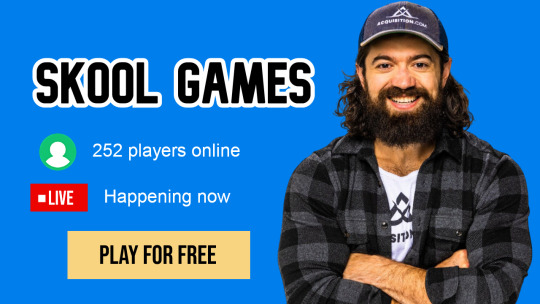
Want to create a thriving online business but don't know where to start? Skool makes it easy. Learn about the Skool platform, the exciting Skool Games challenge, the costs involved, and if it's the right solution for you, regardless of your expertise.
What is Skool?
Skool is a powerful community platform that helps you create, manage, and grow your own online business. Think of it as your one-stop shop for everything you need. Here's what you can do with Skool:
Build Your Online Empire: Create your own online courses, host engaging events, and build a thriving community around your brand.
Get Paid: Easily charge for your courses – either as one-time purchases or recurring subscription memberships.
Simplify Your Business: Skool is designed to be user-friendly and all-inclusive. No need to connect multiple tools – everything you need is in one place. You can even manage your business from your mobile phone with the Skool app!
Quick Setup: Get your online business up and running in under 30 minutes!
Introducing The Skool Games: Your Path to Online Success
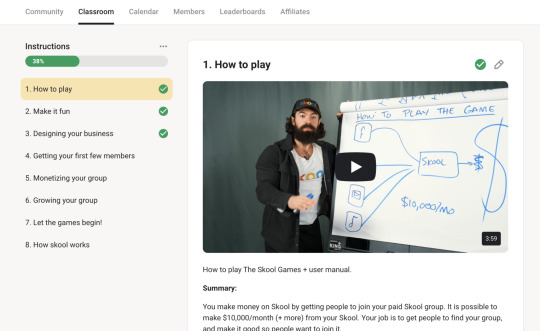
The Skool Games, a unique challenge designed to help you launch and scale your online business. Here's how it works:
Join the Game: Sign up for The Skool Games and get ready for an exciting journey.
Find Your Niche: Identify a product or service to sell.
Promote and Sell: Use your skills and the resources provided to market your offering and acquire customers.
Real-Time Leaderboard: Track your progress and see how you rank against other participants on the live leaderboard, showcasing your monthly recurring revenue (MRR).
Amazing Prizes: The top 10 participants each month win an exclusive one-day mentorship session with Alex Hormozi at his Las Vegas headquarters. This includes networking opportunities and collaborative sessions to improve your business strategies.
Ongoing Learning: Even if you don't win the first month, you'll benefit from recordings of the events, providing valuable insights and strategies from successful participants. Plus, you get another chance to compete the following month!
Alex Hormozi as Your Mentor
Along with the included training, Skool co-owner Alex Hormozi provides clear instructions and answers questions during weekly Monday Q&A Zoom calls with Andrew Kirby.
How Much Does It Cost?
Skool offers a risk-free 14-day free trial. You can cancel anytime with a single click. After the trial, the cost is $99 per month. This includes access to The Skool Games training, the supportive community, exclusive events, and your own Skool software subscription – all the tools you need to build and run your online business.
Do I Need to Be an Expert?
Absolutely not! The Skool Games provides comprehensive training, instructions, and ongoing support, making it accessible to beginners and experts alike. While experienced entrepreneurs may progress faster due to existing knowledge, beginners can also achieve success with dedication and the resources provided.
Understanding the Leaderboards and Prizes
The leaderboards focus on new monthly recurring revenue (MRR). Each month, the leaderboard resets, creating a level playing field for everyone. This ensures fairness and provides continuous opportunities for everyone to compete and win. To ensure more people have a chance to win, you can only claim the prize once.
Ready to Play?
Join The Skool Games today and start your journey to building a successful online business!
Thank you.
0 notes
Text
Alex Hormozi - The -But- Tactic
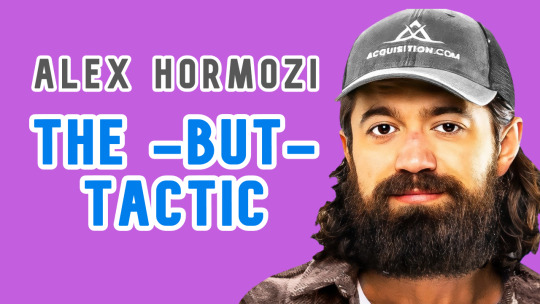
Alex Hormozi shares a powerful persuasion technique, inspired by Eminem. (YT Video)
It's all about strategically using the word "but" to make a positive claim more impactful.
How it Works:
The core idea is to first present some negative or self-deprecating qualities. This creates a "damaging admission." Think of it as being upfront and honest, even if it's not entirely positive. The key is to make these admissions believable. For example, on a date:
Negative Admission: "Listen, sometimes I have a temper. I can be short at times. My business is taking up a lot of my time, so I don't have a ton of time for a dedicated relationship right now."
Positive Assertion: "But I'm absolutely fantastic in bed."
The theory is that by acknowledging the potentially problematic aspects, the subsequent positive statement gains more credibility. The contrast between the negative and the positive elevates the positive in the listener's mind.
Why it Works:
By honestly acknowledging potential negatives, you appear more authentic and relatable. The listener then tends to find the positive statement more convincing and impactful.
Important Note: For this tactic to work, the negative admissions should, at least partially, be true. The more genuine and damaging (within the context) the negative admission, the better the positive assertion works. This method relies on credibility and truthfulness.
Ready to Build Your Business With Alex Hormozi ? Go Here :
Thank you.
0 notes
Text
Alex Hormozi - True Art Of Sales

Stop Trying to Sell, Start Helping!
Tired of feeling like you're just trying to close a deal? Sales doesn't have to be pushy and aggressive. It's about helping people make the right decision.
Instead of focusing on a quick sale, think of yourself as a guide, an expert advisor helping your customer through a problem. Imagine the customer facing "monsters" (obstacles) and you're there to help open the right doors. You're not trying to win a battle, you're collaborating to find the best solution.
How to truly sell:
Guidance over Pressure: True sales isn't about closing the deal; it's about guiding the customer to the best possible informed decision. Focus on helping them, not just pushing a product.
Expert Advisor: Be a trusted source of knowledge, helping the customer navigate challenges to get to their desired outcome.
Collaboration: View the relationship as a partnership. Work with the customer, not against them. Offer support and encouragement, not just sales tactics.
Addressing Concerns: Acknowledge that customers might feel overwhelmed or have time constraints. Emphasize that others have faced similar situations and found success. Empathy goes a long way.
Understanding and Empathy: Truly understand your customer's needs and position. Connect with them on a human level before trying to sell something.
This approach fosters trust and lasting relationships, leading to more satisfied customers and more successful outcomes for everyone involved.
Ready to Build Your Business With Alex Hormozi ? Go Here :
Thank you.
0 notes
Text
Alex Hormozi — How Reciprocity Can Skyrocket Your Sales
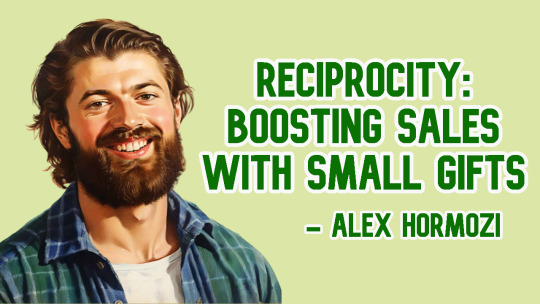
Want to boost your sales? Try this simple trick: give something away. It sounds crazy, but it works. Think of it like this: a waitress gave customers mints with their bill. The more mints, and the more surprising the way she gave them, the bigger the tips she got...
Here's what happened:
One mint: Tips went up a little. It shows that even a small gift makes people happy and more likely to give something back.
Two mints: Tips went up a lot more! The more you give, the more people want to give back.
One mint, then another (surprise!): This was the best! The waitress gave one mint, walked away, and then came back with another. Tips shot way up! This is because the surprise made customers feel extra grateful.
So what's the secret? It's called reciprocity. People feel like they have to return a favor when someone is nice to them. To make it work even better, remember these three things:
Make it personal: Don't just hand out freebies; make it feel special to each customer.
Make it a surprise: Don't let them expect it! A little unexpected kindness goes a long way.
Just give something: The act of giving itself is important. Even a small thing can make a big difference.
This works for any business. Think about what small, unexpected thing you could give your customers. Maybe a small freebie, a handwritten note, or extra-good service. The key is to make it feel special and unexpected. Give it a try—you might be surprised how much your sales increase!
Ready to Build Your Business With Alex Hormozi ? Go Here :
Thank you.
0 notes
Text
Alex Hormozi - Reverse Psychology Hack

Unlocking Deals with Reverse Psychology: A Simple Guide
Ever felt like you're constantly hitting roadblocks in sales or negotiations? Try a little reverse psychology! This technique can help you close deals by subtly shifting the way you ask questions.
The Idea:
Instead of directly asking for something (like "Will you buy this product?"), phrase your questions in a way that allows the other person to say "no" first. This makes them feel safer and more in control, which often leads them to say "yes" later.
Why Does It Work?
People often feel more comfortable saying no. They might feel vulnerable saying "yes" immediately. Reverse psychology essentially removes that pressure by giving them the option to say no without feeling like they're giving a direct rejection. This can be especially powerful when people are tired or have made many decisions (decision fatigue).
Example in Action:
Direct Approach: "Would you like this product?"
Reverse Approach: "Would you be opposed to this product?"
The reverse approach subtly suggests the possibility of a "no" answer, but it still allows for a "yes" and might feel less like a hard sell. It's a matter of framing the question, not changing your desired outcome.
Another Example (Relationships):
Direct Approach: "Let's go to Cheesecake Factory!"
Reverse Approach: "Would you be against going to Cheesecake Factory?"
The key is not to be forceful. It's all about creating a more comfortable environment for the other person to express their opinion without feeling pressured.
In Short:
Reverse psychology isn't about manipulating anyone. It's about asking questions in a way that makes the other person feel more at ease. This often results in them being more receptive to your proposals. Give it a try – you might be surprised at how effective it can be!
Ready to Build Your Business With Alex Hormozi ? Go Here :
Thank you.
0 notes
Text
Alex Hormozi - The Magnetic Middle Price HACK
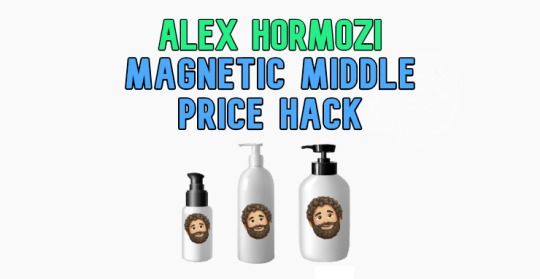
Unlocking Sales with the Magnetic Middle Price Hack
Tired of your pricing strategy feeling stagnant? This simple yet powerful technique, the "Magnetic Middle" price hack, can dramatically boost your sales by strategically positioning your price points.
The Core Concept:
The Magnetic Middle hinges on understanding how price perception affects purchasing decisions. Imagine a three-tiered pricing structure: small, medium, and large. The placement of the medium price point is crucial.
How It Works:
Value Perception: Positioning the medium price point closer to the large option creates a perceived value proposition for the larger product. The larger product suddenly seems like a steal, encouraging purchases at that higher level.
Increasing Medium Sales: To sell more medium products, increase the space between the medium and large options. This makes the medium option seem like the more reasonable choice compared to the premium option.
The Importance of a Premium Option: A high-end, expensive option is crucial. It attracts customers willing to spend more while simultaneously boosting sales of the medium option by creating a sense of value comparison.
Breaking it Down into Practical Steps:
Identify Your Price Tiers: Clearly define your small, medium, and large price points.
Experiment with Positioning: Test different placements of your middle price point. Move it closer to the top to potentially increase large sales, or further away to increase medium sales.
Monitor Sales Data: Track your sales figures after adjusting the medium price point's position.
Understand the Psychology: The trick is understanding how the placement of the medium price point manipulates the customer's perception of value, encouraging them to choose the middle option as a more accessible, but still desirable choice.
Example:
Imagine you offer a $5, $8, and $10 product. If you move the $8 (middle) closer to the $10 product, the $10 one appears to be an attractive upgrade for a small increase in price. Moving the $8 further away from the $10 makes the $8 a better value proposition by comparison.
Key Takeaway: The "Magnetic Middle" isn't about setting arbitrary prices; it's about strategically positioning your prices to maximize your sales potential based on perceived value, a strong psychological concept.
Ready to Build Your Business With Alex Hormozi ? Go Here :
Thank you.
0 notes
Text
Alex Hormozi - The BANT Method
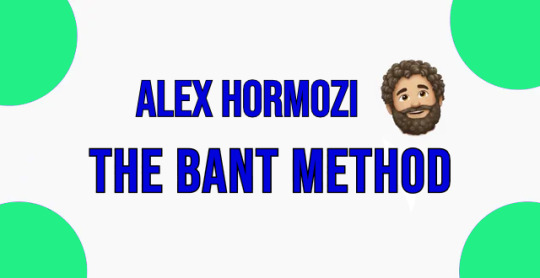
Stop Wasting Time on Unqualified Leads! Master the BANT Method
Are you offering free services but not seeing the results you want? You might be wasting time on leads who aren't ready to buy. The BANT method can dramatically improve your lead qualification process and help you focus your efforts on the right people.
The BANT method is a simple yet powerful framework for identifying qualified leads. It stands for:
Budget: Do they have the money to spend?
Authority: Do they have the decision-making power?
Need: Do they actually have a problem your service can solve?
Timing: Do they need a solution now?
By asking yourself these questions before offering anything for free, you'll avoid wasting time and resources on unqualified prospects.
Example: Instead of offering weight loss services to every single person who contacts you, use the BANT method to filter your leads. If a skinny marathon runner contacts you, chances are they don't need your weight loss services. Focus on individuals who demonstrate the need, budget, and authority to make a purchase.
The BANT method allows you to effectively qualify leads, increasing the chance of converting those leads into paying customers. Instead of giving away your free services to everyone, give them strategically to those who are truly ready to buy. Stop spinning your wheels and start focusing on the qualified leads with the right need, budget, authority and timing.
Ready to Build Your Business With Alex Hormozi ? Go Here :
Thank you.
0 notes
Text
Top 13 business books by Alex Hormozi
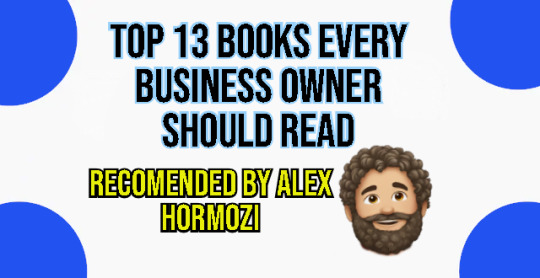
Alex Hormozi, a successful entrepreneur, According to this YouTube Short reads 50 books a year! These 13 are his top picks, the ones he says really helped him build his business:
01-Influence: Robert Cialdini (How to persuade people)

02-Persuasion: Robert Cialdini (More persuasion tips!)

03-50 Scientifically Proven Ways to Be Persuasive: (Practical advice)

04-Expert Secrets: Russell Brunson (Building a strong brand)

05-One to Many: Jason Fladlien (Growing an audience online)

06-Ready, Fire, Aim: Michael Masterson (Starting and growing a business)

07-How to Win Friends & Influence People: Dale Carnegie (Classic advice on people skills)

08-Wooden on Leadership: John Wooden (Leadership lessons from a basketball coach)

09-The Bezos Letters: Steve Anderson (Lessons from Jeff Bezos of Amazon)
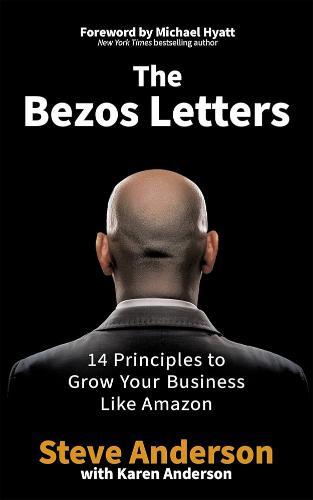
10-100 Million Offers: Alex Hormozi (Hormozi's own book on selling)

11-The Sales Acceleration Formula: Mark Roberge (Boosting sales with data)

12-Predictable Revenue: Aaron Ross (Making sales more consistent)
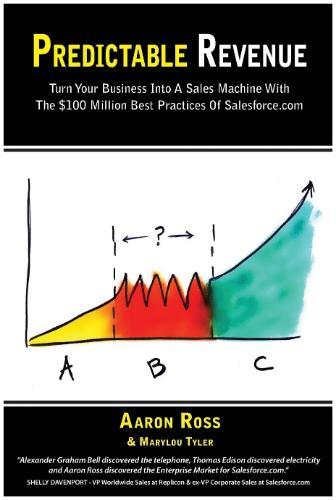
13-The Motive: Patrick Lencioni (Improving leadership within a company)

These books cover persuasion, branding, online marketing, sales, and leadership – everything you need to succeed in business. Pick one and start reading!
Ready to Build Your Business With Alex Hormozi ? Go Here :
Thank you.
0 notes
Text
Alex Hormozi - Cheap Comparison Close

Stop Competing on Price, Start Competing on Value!
Tired of price wars? Learn how to position your product as the superior choice, even if a competitor offers a lower price. The key? Shifting the focus from price to value.
The "Cheap Comparison" Technique:
This simple strategy helps you highlight what makes your product truly special:
Acknowledge the Competition: Recognize that a competitor offers a cheaper price. Don't deny it; acknowledge it.
Challenge the Price Comparison: Instead of arguing the price point, ask the potential customer a crucial question: "If price wasn't a factor, which product would you choose?"
Uncover Unique Selling Points (USPs): Almost without fail, customers will choose your product, citing its superior features, design, quality, or added benefits. Listen carefully to what they say.
Highlight the Value Proposition: Use those customer-identified USPs to articulate why your product is worth the higher price. For example, you might say, "That's because this [feature] or this [design] offers [added benefit]. This is what sets us apart."
Example:
Let's say competitor down the street sells something for $30, and you sell it for $60, don't argue the price. Instead, ask:
"If price wasn't a factor, which product would you choose?"
They'll almost always choose yours. And that's when you ask, "Why?"
Their answer will reveal your product's unique selling points. They'll mention things like "This feature", "This quality", or "This design" that your competitor simply doesn't offer.
And that's how you justify your higher price by highlighting the superior value proposition!
Ready to Build Your Business With Alex Hormozi ? Go Here :
Thank you
0 notes
Text
Alex Hormozi - Diagnostic Selling

Tired of generic sales pitches that fall flat? Diagnostic selling isn't about pushing a product; it's about understanding your customer's needs and tailoring a solution that resonates.
Diagnostic selling is a powerful technique that focuses on deeply understanding the client's situation and uncovering their underlying motivations. It's about moving beyond features and benefits to address the core problems and desired outcomes.
Why Diagnostic Selling Works:
Deep Understanding: Instead of assuming everyone needs the same solution, diagnostic selling delves into the specific pain points and aspirations of each client. This personalized approach fosters trust and rapport.
Value-Based Pricing: By understanding the client's needs and the value of your solution to them, you can better justify pricing and demonstrate a clear return on investment.
Building Rapport and Trust: Clients appreciate the thoughtful approach and feel understood, fostering a stronger connection and increasing the likelihood of a successful sale.
Solving Problems, Not Just Selling Products: You become a trusted advisor, identifying and addressing their real needs, leading to a long-term relationship instead of a one-time transaction.
How to Master Diagnostic Selling:
Ask Powerful Questions: Move beyond simple "yes" or "no" questions. Probe deeper to understand the root causes of their challenges and their ultimate goals. For example, instead of "Do you need a new phone?", ask "What are your biggest frustrations with your current phone?".
Listen Actively: Pay close attention to the client's responses, identifying key pain points, aspirations, and motivations.
Empathize and Validate: Show that you understand their situation and acknowledge their concerns. This validates their feelings and builds rapport.
Tailor Your Solution: Craft a solution that directly addresses their specific needs and desires. This personalized approach demonstrates that you've invested the time to understand their unique situation.
Demonstrate Value: Highlight how your solution directly addresses the client's problems and helps them achieve their goals.
Diagnostic selling isn't just a sales technique; it's a way of building lasting relationships with clients. By truly understanding their needs, you're not just selling a product; you're solving a problem and offering a solution that truly matters. #sales #salesstrategy #customercentric #selling #valuebasedselling
Ready to Build Your Business With Alex Hormozi ? Go Here :
Thank you.
0 notes
Text
Van Westendorp Pricing Index

Want to know the sweet spot for your pricing? Forget guesswork! The Van Westendorp pricing index is your secret weapon. This method doesn't rely on gut feeling; it's data-driven.
In this video, Alex Hormozi explains how to use the Van Westendorp method to pinpoint the optimal price point for your product or service.
Here's the breakdown:
Ask Four Crucial Questions: Survey your target audience with these questions:
Too Expensive: At what price is this product/service too expensive to consider?
Too Cheap: At what price would you question its effectiveness?
Good Value: At what price do you feel it's a good bargain?
Acceptable: At what price would you buy it, but it might sting a little?
Plot the Answers: Use the responses to create a graph showing the price ranges where most people are satisfied with the value.
Find the Sweet Spot: The area under the curve on your graph reveals the price point with the highest desirability, maximizing conversions.
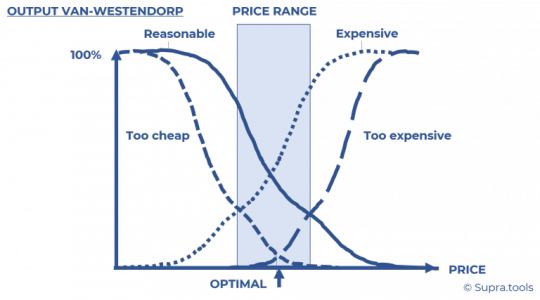
Stop relying on instinct! Use the Van Westendorp method to fine-tune your pricing strategy and boost your bottom line. #pricingstrategy #businesstips #vanwestendorp #pricing #sales #marketing #entrepreneurship
Ready to Build Your Business With Alex Hormozi ? Go Here :
Thank you.
0 notes
Text
Alex Hormozi - The AAA Framework
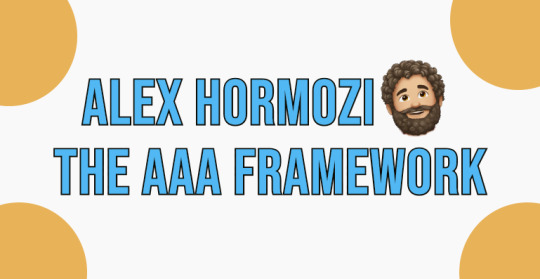
Instead of trying to "win" an argument, the AAA Framework focuses on building rapport and creating positive associations. It's all about understanding the prospect and connecting with them on a deeper level.
How it Works: The Three Steps to Success
Acknowledge: Don't dismiss objections; acknowledge them. Show the prospect you understand their concerns. Instead of immediately pushing back, validate their feelings. Phrases like "Totally understand you need to think about it" or "That's a smart question" go a long way.
Associate: Connect the prospect's concerns to positive outcomes and similar situations. There are three ways to do this:
Generic Positive Association: Validate the concern without directly addressing it. "That makes perfect sense."
Foil Association: Introduce a fictitious "foil" – someone similar to the prospect who overcame the same objection and experienced a positive result. "Janet, who's just like you, had the same concerns six weeks ago, and now she's lost 30 pounds!"
Authority Association: If applicable, leverage your expertise or the experience of someone influential. "Alex just told me this today..."
Ask: After acknowledging and associating, reignite the conversation with another sales pitch. This isn't about forcing a sale; it's about maintaining momentum and subtly steering the discussion towards a positive outcome.
Why It Works:
This framework works because it shifts the focus from arguing to building rapport and creating positive associations. Instead of feeling pressured, the prospect feels understood and more open to the opportunity. This allows you to subtly address concerns within the narrative of someone like them, rather than directly challenging them.
Key Takeaways:
Rapport is crucial: Maintaining a strong connection with the prospect is paramount.
Storytelling is powerful: Use real or fictional stories to engage emotions and drive conversions.
Objection handling is a conversation, not a battle: Treat objections as opportunities to understand and connect rather than obstacles to overcome.
Ready to Build Your Business With Alex Hormozi ? Go Here :
Thank you.
0 notes
Text
Alex Hormozi - Rule of 300
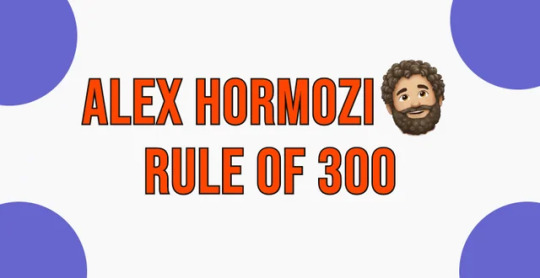
The "Rule of 300," a method advocated by Alex Hormozi, emphasizes organic growth through consistent engagement, relationship building, and strategic commenting. It aims to leverage the power of community participation and quality interaction to gain a broader audience and build a stronger online presence. The core principle involves a daily schedule of:
100 Minutes of Content Creation: Dedicate 100 minutes per day to creating valuable content that engages your audience. Focus on quality over quantity.
100 Minutes of Outreach: Spend 100 minutes connecting with people who have engaged with your content (commented, liked, followed). This helps build relationships and fosters a community around your work.
100 Minutes of Comments: Invest 100 minutes in commenting on relevant content within online communities or public posts. Focus on providing insightful and valuable comments to gain visibility and build connections.
A Youtube short video that outlines the exact method :
youtube
Ready to Build Your Business With Alex Hormozi ? Go Here :
Thank you.
1 note
·
View note